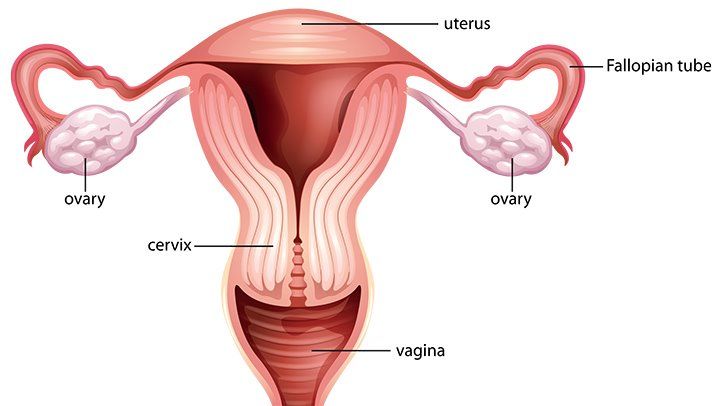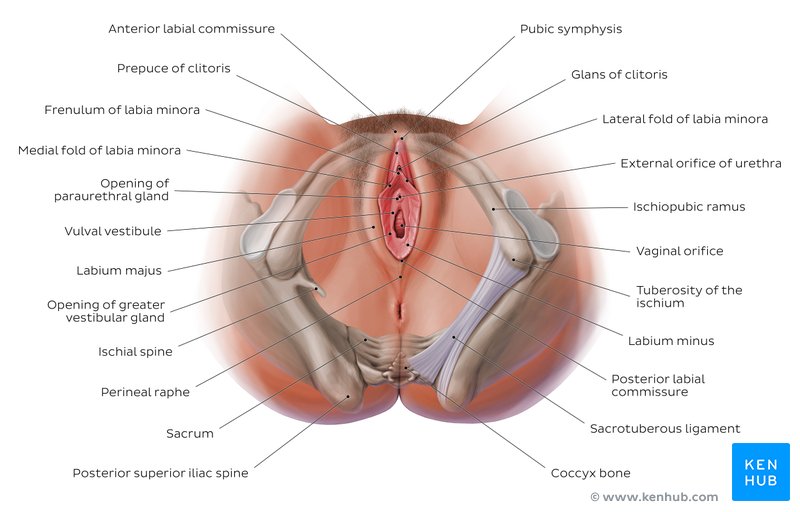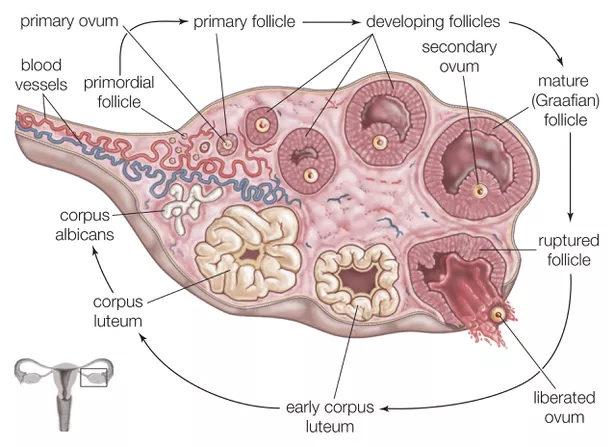Female Reproductive Organ Study Guide
Introduction
The female reproductive system comprises two ovaries, fallopian tubes, uterus, cervix, and the vagina. There also exist certain other accessory reproductive structures that together comprise the female’s reproductive system. This guide mainly focuses on the female reproductive system, as well as its anatomy and functions.
The Female Reproductive System
To ensure the continuation of species, the reproductive system in females plays a crucial role. There is an entire support system, within a female’s body, in order to provide special space and optimal conditions for a baby to grow. Additionally, the system can also produce necessary hormones that are usually required for the proper development of a fetus. All the female reproductive system parts work together and ensure conception, pregnancy, and childbirth.
Structure of the Female Reproductive System
Organs of the female reproductive system can be broadly classified based on their locations, visible structures, and internal organs.
External organs
- Labia majora
- Labia minora
- Bartholin’s glands
- Clitoris
Interal Organs
- Ovary
- Fallopian tubes
- Uterus
- Cervix
- Vagina
Diagram of the internal reproductive system (internal):
Ovary
Within the abdominal cavity lies a pair of ovaries on either side of the uterus. Each of these is oval and shows two main functions:
- production of eggs (ova)
- release of sex hormones
These hormones lead to mature eggs (or ova) during adolescence, characterized as the female gamete. Generally, every alternate month one of these two ovaries releases a mature egg ready to fertilize. This process of releasing mature eggs from the ovary is known as ovulation.
Important functions of the ovaries
- Produces sex hormones estrogen and progesterone leading to the development of primary and secondary sexual traits
- Formation of female gametes and that facilitate childbirth
- Hormones produced lead to the proper development of bones and muscles and, therefore, increased height.
Fallopian tubes
Connecting each of the ovaries to the uterus is a pair of tube-like structures called fallopian tubes.
- These tubes are also called uterine tubes or oviducts
- Each of these fallopian tubes at one end corresponding to ovaries is flattened into a funnel-shaped opening, known as the oviducal funnel.
- The inner walls of this funnel opening are lined with small hair-like projections, cilia that aid in the capture of released eggs.
- Repeated muscular contraction and relaxation of the fallopian tube walls help the easy movement of an egg from the oviducal funnel onto the uterus.
Important functions of the fallopian tube:
- The fertilization process, the fusion of sperm and ovum, occurs within fallopian tubes.
- Acts as a channel connecting the uterus with the ovaries.
- Fallopian tube malformations are often related to infertility issues.
- Surgical procedures are often conducted on fallopian tubes for sterilization purposes.
Uterus
Commonly called the ‘womb,’ the uterus plays an important role in the anatomy of the female reproductive system.
- The uterus is a hollow muscular pear-shaped structure located within the pelvic cavity and lies between the urinary bladder and the rectum.
- The upper part of the uterus is broader than its lower tapering region.
After each ovulation, the inner lining of the uterus, known as endometrium, starts developing to receive a possibly fertilized egg.
However, when an egg is not fertilized, with each menstrual cycle, this endometrial wall sheds, and comes out through the vagina as menstrual blood.
Important functions of the uterus:
- It forms a receiving chamber for a fertilized egg.
- The uterine wall develops to form a bed for the implantation of a fertilized egg.
- During pregnancy, the placenta forms within this uterus that act as a source of nutrition and oxygen for the fetus.
Cervix
The lower portion of the uterus gets tapered and constricted to form the cervix. This, too, is a muscular structure that shows repeated contraction and relaxation and thus facilitates easy passage during childbirth.
Important functions of the cervix:
- The cervix produces mucus that shows multiple functions. This is primarily an easy passage of the fetus from the uterus to the vagina. The mucus released also helps in the stoppage of sperms during pregnancy.
- Another function of the mucus produced in the prevention of entry of harmful bacteria into the vagina and uterus.
- The cervix at its bottom possesses a small opening that allows easy drainage of fluids, such as menstrual blood.
Vagina
The cervix opens into an elongated tube structure called the vagina, approximately 10-15cm long. This is a muscular structure, and the walls of the vagina show great elasticity. This elasticity helps in copulation and as well as during childbirth.
Important functions of the vagina:
- Connects the external and internal reproductive organs.
- Allows easy passage of fluids (e.g., menstrual blood).
- Allows sperm containing semen to enter the body and pass onto internal structures for fertilization.
Conclusion:
- To summarize it all, it can therefore be stated that each female reproductive structure holds a special function in the overall well-being of an individual.
- The female reproductive system is made of an array of special organs that ensure species’ maintenance.
- Important hormones have been produced that lead to females’ sexual, emotional, and physiological maturity.
FAQs:
1. What are the 5 main parts of the female reproductive system and their functions?
The 5 main parts are as follows:
- Ovary: Produces eggs (female gametes) and hormones.
- Fallopian tubes: Helps in the transfer of mature eggs. Additionally, it is also the location where the fertilization process takes place.
- Uterus: Hollow chamber where a fertilized eggs implants and grows into a fetus.
- Cervix: This allows for drainage of fluids and passage of the fetus.
- Vagina: Tube structure that acts as a receiving chamber of sperms. Also, an easy passageway for the baby through during childbirth.
2. What is the main reproductive organ in females?
Two ovaries located in the abdominal cavity are the main reproductive organ in females.
3. What are the 4 external reproductive organs?
- Labia majora
- Labia minora
- Bartholin’s glands
- Clitoris
4. Why do ladies pull?
Pulling or labia stretching is often performed by several females to enhance their sexual performance. Also, it is perceived that labia pulling leads to enhanced female orgasm and facilitates smooth female ejaculation.
5. What is a man’s private area called?The private area is made up of a penis and scrotum.
We hope you enjoyed studying this lesson and learned something cool about Female Reproductive Organs! Join our Discord community to get any questions you may have answered and to engage with other students just like you! Don’t forget to download our App and check out our awesome VR room for this guide – we promise, it makes studying much more fun 😎
Sources:
- Female Reproductive Organshttps://flexbooks.ck12.org/cbook/ck-12-biology-flexbook-2.0/section/13.61/primary/lesson/female-reproductive-structures-bio/ Accessed on 2 Dec 2021.
- Female reproductive organ anatomyhttps://www.medicalnewstoday.com/articles/female-reproductive-organ-anatomy#summary Accessed on 2 Dec 2021
- The female reproductive system https://patient.info/news-and-features/the-female-reproductive-system Accessed on 2 Dec 2021
- Female Reproductive Systemhttps://my.clevelandclinic.org/health/articles/9118-female-reproductive-system Accessed on 2 Dec 2021
- Female Anatomy: The Reproductive Organshttps://www.everydayhealth.com/sexual-health/female-reproductive-organs.aspx Accessed on 2 Dec 2021



